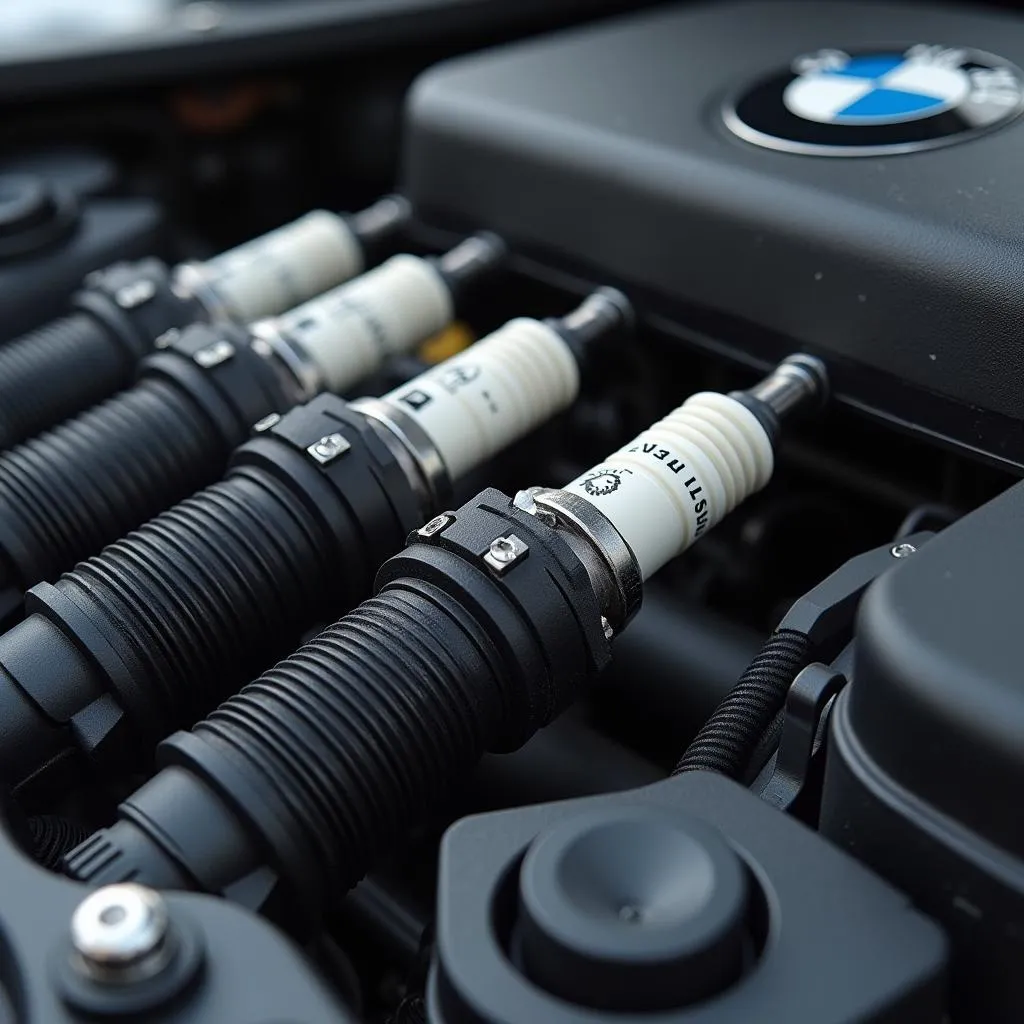Experiencing both a flashing “Service Engine Soon” light and car shaking in your BMW X3 is a sure sign that something is wrong. Ignoring these warning signs can lead to further damage and costly repairs down the line. This comprehensive guide dives deep into the common causes of this dual issue, empowering you with the knowledge to tackle the problem head-on.
Understanding the “Service Engine Soon” Light and Car Shaking
The “Service Engine Soon” light is your BMW’s way of telling you that there’s a problem with its engine or emissions system. Unlike the more critical “Check Engine” light, the “Service Engine Soon” light often indicates a less severe issue that needs attention.
Car shaking, on the other hand, points to problems with your vehicle’s stability and smooth operation. When combined with the “Service Engine Soon” light, it suggests a deeper issue impacting both engine performance and overall vehicle behavior.
Common Culprits Behind the Issue
Several potential culprits can trigger both the warning light and the unsettling shaking in your BMW X3. Here are the most common ones:
-
Faulty Spark Plugs: Worn-out or malfunctioning spark plugs disrupt the combustion process, leading to misfires. This can cause engine vibrations and trigger the “Service Engine Soon” light.
-
Clogged or Damaged Ignition Coils: Ignition coils provide the high voltage necessary for spark plugs to ignite the fuel. A failing ignition coil can cause misfires, rough idling, and decreased engine performance.
-
Vacuum Leak: A leak in the intake manifold or other vacuum-operated components can disrupt the air-fuel mixture, causing engine misfires, rough running, and even shaking.
-
Dirty Mass Air Flow (MAF) Sensor: The MAF sensor measures the amount of air entering the engine. A dirty or faulty MAF sensor can send incorrect data to the engine control unit (ECU), resulting in a rich or lean air-fuel mixture and subsequent engine performance issues.
-
Faulty Oxygen Sensor: Oxygen sensors monitor the exhaust gases to ensure the correct air-fuel mixture. A malfunctioning oxygen sensor can lead to reduced fuel economy, increased emissions, and engine performance problems.
Diagnosing the Problem
Pinpointing the exact cause of the problem requires a systematic approach. Here’s what you can do:
-
Check for Error Codes: Use an OBD-II scanner to retrieve any stored error codes. These codes provide valuable insights into the potential source of the problem.
-
Inspect Spark Plugs and Ignition Coils: Visually examine the spark plugs for wear, damage, or fouling. Also, check the ignition coils for any signs of cracks or corrosion.
-
Look for Vacuum Leaks: Listen for any hissing sounds coming from the engine bay, particularly around the intake manifold. You can also use a smoke machine to detect leaks.
-
Clean or Replace the MAF Sensor: Carefully remove the MAF sensor and clean it with a dedicated MAF sensor cleaner. If cleaning doesn’t resolve the issue, consider replacing the sensor.
-
Inspect and Replace Oxygen Sensors: Check the oxygen sensors for any physical damage or signs of wear. Replace any faulty sensors with OEM or high-quality aftermarket alternatives.
Addressing the Issue: DIY vs. Professional Help
While some issues, like cleaning the MAF sensor or replacing spark plugs, can be tackled by experienced DIY enthusiasts, others require specialized knowledge and tools. If you’re unsure about diagnosing or repairing the problem yourself, it’s always best to consult a qualified BMW mechanic.
Attempting complex repairs without the necessary expertise can lead to further damage and higher repair costs in the long run. A professional mechanic can accurately diagnose the issue, source the correct parts, and perform the repairs to manufacturer standards.
Preventing Future Issues
Regular maintenance is crucial in preventing the “Service Engine Soon” light and car shaking. Adhering to your BMW X3’s recommended maintenance schedule, including timely spark plug replacement, air filter changes, and fuel system cleaning, can significantly reduce the risk of encountering these problems.
Additionally, using high-quality fuel, avoiding short trips, and promptly addressing any unusual engine noises or performance issues can contribute to a smoother and more reliable driving experience.
Conclusion
Experiencing a “Service Engine Soon” light and car shaking in your BMW X3 can be alarming, but understanding the potential causes and taking the right steps to address the issue can save you time, money, and frustration. Whether you choose the DIY route or seek professional help, remember that timely action is key to keeping your BMW running smoothly.
FAQs
Q: What should I do if the “Service Engine Soon” light starts flashing?
A: A flashing “Service Engine Soon” light usually indicates a more serious issue. Pull over to a safe location, turn off your engine, and contact a qualified mechanic immediately.
Q: Can I continue driving with the “Service Engine Soon” light on?
A: While you might be able to drive short distances, it’s not recommended to ignore the warning light. Continuing to drive with an underlying issue can cause further damage and potentially leave you stranded.
Q: How often should I replace my BMW X3’s spark plugs?
A: Refer to your owner’s manual for the specific recommended spark plug replacement interval. Generally, it’s advisable to replace them every 30,000 to 40,000 miles.
Need immediate assistance with your BMW X3 “Service Engine Soon” light and car shaking? Contact our expert team via WhatsApp at +1(641)206-8880 or email us at [email protected]. We’re available 24/7 to help you get back on the road.



